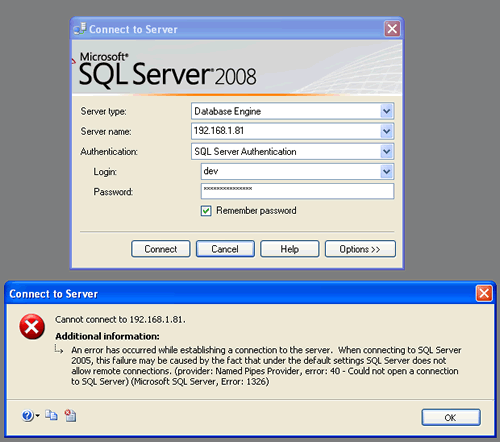Microsoft Sql Server Error 10061 Solution

Failed to retrieve data for this request. Within SQL Server Management Studio, view Object Explorer Details window by selecting View, Object Explorer Details in menu (or hitting F7)2. Select the 'Databases' node, then right- click on the column header and unselect 'Collation.'3. Refresh the server in Object Explorer and enumerate the databases. Work around #2: 1. Within SQL Server Management Studio, view Object Explorer Details window by selecting View, Object Explorer Details in menu (or hitting F7)2. In Object Explorer window click at Databases folder.
SHELDMANDU's thoughts on Windows could not start the SQL Server on Local Computer Error Code 3417 (Programming). Bitvise SSH Client: Free SSH file transfer, terminal and tunneling. Our SSH client supports all desktop and server versions of Windows, 32-bit and 64-bit, from. Search for answers, get support and training, review your products, downloads and licenses, and engage with the user community and Ipswitch support services.
In Object Explorer Details window right- click at the column header and select . Power Data Recovery Free Download With Keygen Download. Refresh Databases folder. Work around #3: 1. Check the database options for the “Auto Close” setting. If it is set to “True,” change it to “False” and test again. Further explanation: Collation for an offline database is returned as NULL by the engine, and SSMS currently interprets NULL values as a permissions issue.
I was recently prompted by the following error message while attempting to connect to a MS SQL Server instance: A connection was successfully established with the. Socket Error 10061 is another type of Socket Error that is common with PC users who are trying to use their Microsoft based e-mail program. Installation Steps For Red Hat Linux Certification there. When this error occurs it. Here's one solution.
Logon to the computer hosting the instance of SQL Server. On the Start menu, point to All Programs, point to Microsoft SQL Server 2008 R2, point to Configuration.
Credit goes to: http: //www.